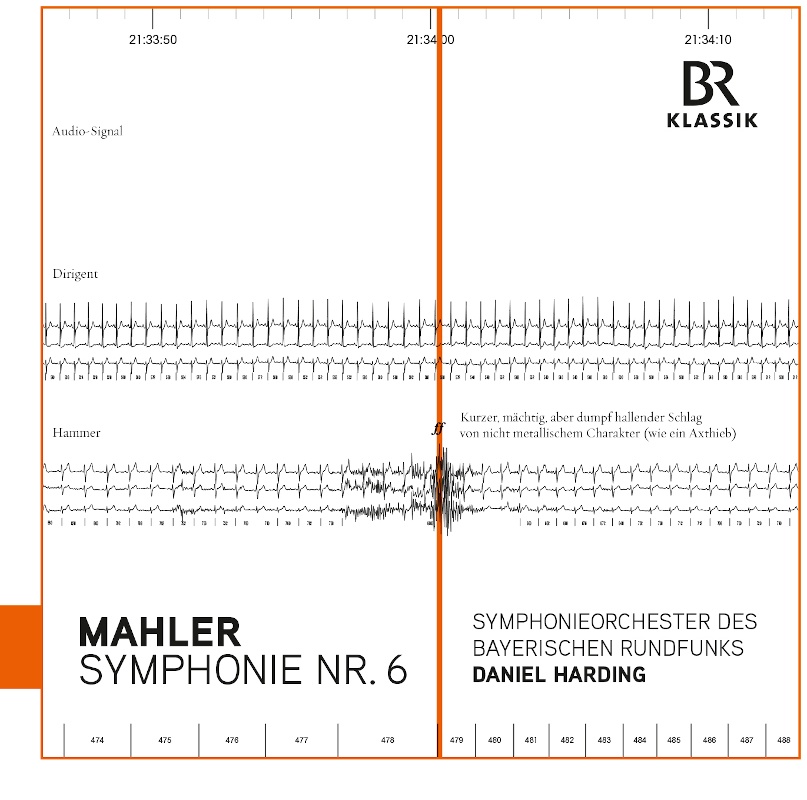
Mahler: 6th Symphony

With the live recording of Mahler’s 6th Symphony, BR-KLASSIK releases the second CD under the baton of Daniel Harding, who has repeatedly attracted attention with extraordinary concerts as a guest with the Symphonieorchester des Bayerischen Rundfunks. On the cover of the CD: the heartbeat of the percussionist during the famous hammer blow in the finale of the symphony.
Order online nowIt is considered his most radical symphony, bears the epithet “Tragic” and ends in a hopeless minor key – in his Sixth Symphony, Gustav Mahler built a gloomy musical worldview for himself that, on the surface, did not seem to fit in at all with the happy stage of life that he had passed through at the time of its composition in 1903/04 in the circle of his family with Alma and his two young daughters and as a successful Viennese court opera director. But the dark clouds were already gathering on the horizon, as Alma Mahler later reported, so that the three original, spectacular hammer blows from the finale of the symphony were harbingers of Mahler’s own strokes of fate, the death of his daughter, his resignation as director of the court opera, and the diagnosed heart condition that ultimately led to his own early death. The Sixth was then premiered with only two hammer blows on May 27, 1906 in Essen.
BR-KLASSIK presents in this recording another production based on Schumann’s Faust Scenes (BR-KLASSIK, 900122) with Daniel Harding, who counts Sir Simon Rattle and Claudio Abbado among his teachers and who has been a regular guest conductor of the Symphonieorchester des Bayerischen Rundfunks since 2005. This fruitful collaboration resulted in 2014 in the live recording of Gustav Mahler’s Sixth Symphony from the Munich Philharmonie in the Gasteig. Daniel Harding proves himself to be a Mahler interpreter who selectively adds individual works to his hitherto scanty Mahler discography in thoughtful interpretation with a great horizon of experience from numerous live concerts. In the Symphonieorchester des Bayerischen Rundfunks, he meets an ensemble that has been a pioneer among Mahler interpreters since the Kubelík era in the 1960s and that has since appeared several times with major Mahler symphony cycles.
What physical stresses are conductors and musicians exposed to during a concert? To get an answer to this question, long-term ECG devices were put on four musicians of the symphony orchestra and conductor Daniel Harding at the March 21, 2014 concert to record their heart rates. An audience of 2,400 witnessed the concert at the Philharmonie, and it was also broadcast live on the radio and via live video stream. The experiment was supervised by renowned cardiologist Prof. Dr. Gerhard Steinbeck, who will also evaluate the data. Initial results show that Daniel Harding in particular performed at his best. In the case of the drummer, the hammer blows can be seen precisely in the ECG (see CD cover). The detailed evaluation is still pending, but a conclusion can already be drawn: The stress situation of the musicians is comparable to that of high-performance athletes or Formula 1 drivers.
Award
In 2016, the recording was awarded the Diapson d’or.